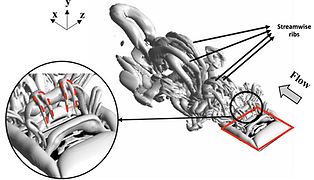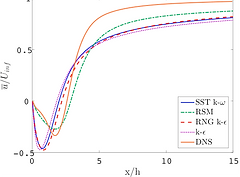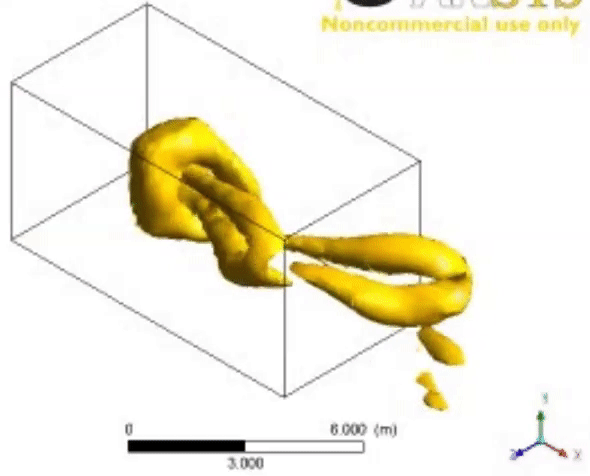CURRENT RESEARCH PROJECTS
This is an interdisciplinary research that focuses on understanding the physics of underwater locomotion in marine mammals and fish. Using nature, which has mastered the art of engineering through evolution, this research looks at engineering propulsors and energy harvesting technologies with performances similar to those of animals. The three outreaching questions are:
(Q1) What is the underlying physics of fluid-structure interaction in bio-propulsors that lead to their highly efficient, fast and stealth locomotion?
(Q2) How can we replicate the performance of bio-propulsors for next generation of propulsion and energy harvesting technologies?
(Q3) How to develop the science & technology to surpass the limits of biology?
The long-term objective of the proposed research is to develop efficient, fast, and stealth underwater propulsion and ocean floor energy harvesting technologies that surpass the performance of bio-propulsors in nature. This requires an interdisciplinary collaborative research program that involves biologists, zoologists and engineers using a combination of experimental (in collaboration with other researchers) and numerical (CFD) tools.
Bio-inspired Design of Propulsors & Energy Harvesting Technologies


Funding: National Science and Engineering Research Council (NSERC) of Canada
Collaborators: Princeton University
Positions: 2 PhD and 1 MSc positions are available for this project.
Funding: University of Alberta
Positions: 1 MSc position is available for this project.
The complexities of vortex shedding and wake dynamics due to flapping of the shear layers on sharp-edge bodies (i.e., flat plates and rectangular cylinders) are the focus of this study. Specifically, this project looks at how the wake dynamics and vortex formations change with increasing thickness of the plate. This aims at identifying the critical thickness at which the nature of the wake transforms from that of thin flat plates to rectangular cylinders, and what are the wake characteristics that result in this transformation. The implications of this transformation on surface pressure distributions, unsteady lift and drag variations and wake characterizations are crucial in both fundamental study of wakes (shear layer and vortex dynamics), and industrial applications (i.e., wind engineering, aircraft design, etc.).
Using a combination of DNS and LES simulations through OpenFOAM, ANSYS CFX and MATLAB, this study looks at the wake development for a series of normal flat sharp-edge bodies with increasing thickness.
Wake & Vortex Dynamics of Sharp-Edge Bluff Bodies
Iso-surface of Q for a rectangular tail fin in mixed pitching-heaving motion
Iso-surface of Mean Velocity Magnitude for a sharp (convex) tail fin in pitching motion
Analytical Modeling of Turbulent Boundary Layers
This research looks at mathematical and numerical methods to analytically model the turbulent boundary layer development along a heated vertical wall leading to large temperature gradients (~400 C). This research initially focuses on 2D boundary layers and proceeds to that of 3D (special cases) boundary layer developments.
This study has direct applications in development of geothermal, aerospace and energy extraction technologies. The objective is to develop simple models for various boundary conditions and environmental settings to enhance the performance of control systems. This can be achieved by improving the accuracy of predicting thermal and velocity boundary layer thicknesses.
Funding: University of Alberta
Collaborators: University of Calgary
Positions: 1 MSc position is available for this project.

Alternative Energy Systems
This project is part of a broader program that looks at enhancing alternative energy extraction and harvesting technologies related to wind, solar and geothermal energy in Alberta. At this time, our focus is on (1) geothermal energy extraction using existing unconventional oil reservoirs and wellheads in northern Alberta, and (2) wind collector installation infrastructures. This project has industry support from Alberta energy industry and may require off-campus assignments.
Funding: University of Alberta, Industrial Sponsorship
Positions: 1 MSc position is available for this project.

Funding: University of Alberta
Collaborators: University of Calgary
Positions: 1 MSc position is available for this project.
Non-Linear Eddy Viscosity Models for Turbulent Wakes
The large pressure gradients in the wake of thin flat plates results in regions of negative turbulence kinetic energy production in immediate vicinity of the plate. This phenomenon cannot be properly captured by typical turbulence (i.e., RANS, URANS SST, RSM) and sub-grid scale models (i.e., Smagorinsky LES, Smagorinsky–Lilly & Germano Dynamic LES) as identified by Hemmati et al. (2017). This results in incorrect characterization of the mean and unsteady wake (i.e., re-circulation length, Reynolds stresses). Implementing a non-linear eddy viscosity model may allow for the large velocity gradients leading to negative energy production.
This model will be developed specifically for thin sharp-edge bodies with fixed separation points and no reattachment.
Cardiovascular Flows
This is part of a long-term research program on cardiovascular flow simulations aimed at developing technologies for clot prevention and removal in collaboration with the School of Medicine at the University of Alberta. At this stage, the focus is on simulating the blood flow (and artificial fluid representing blood) and develop the best mechanism to retain the heart functionality during the transplant process. Typically, the donor's heart is stored in chilled environment until the recipient is prepared and necessary tests are carried out. However, this results in the heart losing its full functionality prior to the transplant, and thus, increases the risk of failure. This study looks at developing the tools to retain the heart pumping function during the transplant process.
Funding: University of Alberta
Collaborators: University of Alberta - School of Medicine
Positions: 1 MSc position is available for this project.

The turbulent kinetic energy (top) and mean streamwise velocity (bottom) along the wake centreline.
Multiphysics simulation of natural boundary layer development along a heated vertical wall


The vortex shedding from a thin flat plate of aspect ratio 3.2 at Re=1200
